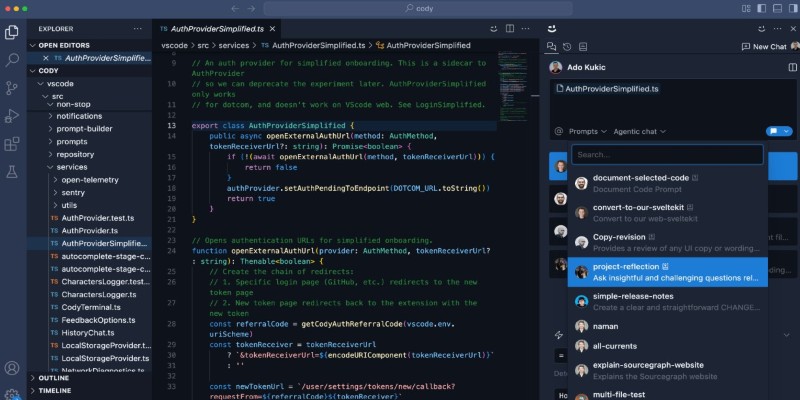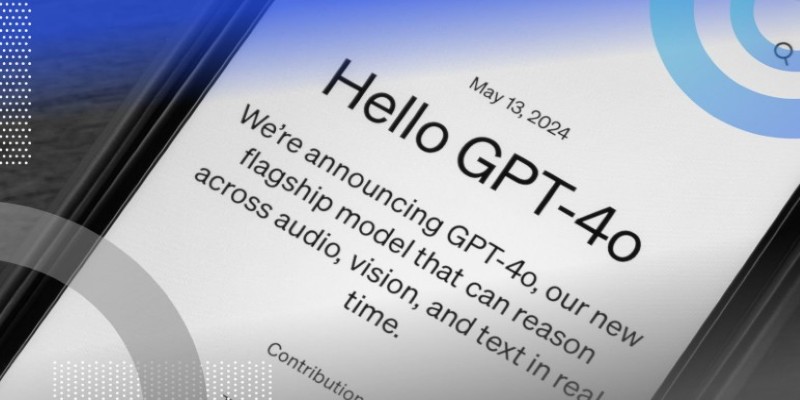Advertisement
The launch of Devin AI stirred up interest across the tech crowd for a good reason—it promises hands-free software development. But while the idea of a tool that handles everything from planning to coding sounds great, many are still weighing their options. Maybe it's pricing, maybe it's performance, or maybe you just want to test out other tools before settling. That's where this list comes in. Below are eight alternatives to Devin AI that stand out in different ways, depending on what kind of support you're after.
Built by OpenAI and GitHub, Copilot acts like a seasoned coder whispering suggestions while you type. It offers in-line code recommendations, context-aware completion, and support across several languages. Whether you’re setting up a project in Python or tweaking a React component, Copilot learns from your patterns and the broader context to suggest clean, ready-to-run code. What really helps is its ability to speed up routine tasks and take care of boilerplate, leaving you to focus on the logic that matters.
 If you’re looking for a free alternative that still brings strong coding support, Codeium is worth a look. It integrates with over 40 editors, offers AI-powered code completion, and works across multiple programming languages. It’s fast, constantly learning, and doesn’t gatekeep features behind a paywall. Developers who need an accessible but high-functioning assistant often find Codeium easy to stick with, especially since it doesn’t interrupt the workflow with unnecessary prompts or distractions.
If you’re looking for a free alternative that still brings strong coding support, Codeium is worth a look. It integrates with over 40 editors, offers AI-powered code completion, and works across multiple programming languages. It’s fast, constantly learning, and doesn’t gatekeep features behind a paywall. Developers who need an accessible but high-functioning assistant often find Codeium easy to stick with, especially since it doesn’t interrupt the workflow with unnecessary prompts or distractions.
Tabnine positions itself as a privacy-focused solution. It uses your local environment to make code predictions and doesn’t send sensitive information to the cloud. The suggestions are snappy and tailored to your project’s codebase. Teams working on proprietary projects often prefer Tabnine because of its enterprise-ready options and private models. It’s a useful pick for those who want the benefits of AI without compromising on code security.
Ghostwriter is embedded right into Replit’s online IDE. If you’re someone who prefers coding in the browser or likes to work from different devices without complex setups, Ghostwriter feels like a natural fit. It offers real-time code completion, generates full functions, and includes explainers for unclear code. This is especially helpful for beginners or anyone learning a new language. It keeps the coding process moving without forcing you to dig through documentation constantly.
For AWS-heavy projects, CodeWhisperer feels like home. It’s built to understand and work within Amazon’s cloud ecosystem. It autocompletes code, offers security scanning, and provides natural language-to-code translation. The connection with AWS services means less context switching and smoother development. It also recognizes APIs and service patterns, helping you structure your application the way AWS expects.

Cody isn't just about writing new code—it's about working with what's already there. It reads entire codebases and helps you understand complex relationships between files, functions, and modules. When you're dropped into a legacy project or reviewing unfamiliar code, Cody cuts down hours of figuring things out. It also helps generate documentation and tests, so you're not stuck cleaning up after a rushed sprint.
Polycoder is open-source and based on GPT-2, offering a fully offline coding assistant for those who want complete control. It’s especially appealing for researchers or developers who want to experiment with custom models or build AI-based features into their tools. While it may not be as polished as some commercial options, the flexibility and freedom it offers are unmatched. You decide how it runs, where it lives, and how it evolves.
Cursor is a developer-focused code editor with AI features built directly into the workflow. Unlike traditional editors that rely on plugins, Cursor is designed from the ground up with AI in mind. It doesn’t just complete code—it helps you edit existing code, explain unfamiliar snippets, and refactor sections across files. What makes Cursor stand out is how naturally it blends AI suggestions into real-time development. It’s fast, supports collaborative work, and works especially well when jumping between tasks.
Once you've chosen GitHub Copilot as your assistant, the setup is simple. Open Visual Studio Code and head over to the Extensions tab. Search for "GitHub Copilot," install it, and wait for the prompt to sign in using your GitHub credentials. If you already have an active subscription, Copilot will immediately ask for permission to access your editor. Approve those, restart the application, and the tool will begin running in the background. There are no complicated setup steps or onboarding screens—it just quietly waits for your next line of code.
To get the most out of Copilot, it helps to understand how it responds to your prompts. Clear, specific comments go a long way in guiding its suggestions. If you need a function to sort a list alphabetically, a comment like // function to sort names alphabetically gives Copilot exactly what it needs. Once the comment is written, pressing enter and beginning the first line of code will trigger a full function suggestion based on that context. You can accept it with the Tab key or scroll through other versions if the first one doesn’t quite fit. Over time, it adjusts to your patterns and preferences, but giving it well-defined instructions will always bring the best results.
There’s no single tool that will suit every developer in every situation. Devin AI has drawn attention with its bold claims, but the landscape is wide and full of serious contenders. Whether you want something free like Codeium, privacy-first like Tabnine, or tightly integrated with cloud services like CodeWhisperer, the right choice depends on what you need today. But if you’re ready to test something reliable and already proven, GitHub Copilot is a solid place to start—and using it is just as straightforward as writing your next line of code.
Advertisement

What if one AI model could read text, understand images, and connect them instantly? See how GPT-4o handles it all with ease through a single API

What predictive AI is and how it works with real-life examples. This beginner-friendly guide explains how AI can make smart guesses using data

Looking for smarter ways to code in 2025? These AI coding assistants can help you write cleaner, faster, and more accurate code without slowing you down

Discover how AI and DevOps team up to boost remote work with faster delivery, smart automation, and improved collaboration

Want sharper, quicker AI-generated images? Adobe’s Firefly Image 3 brings improved realism, smarter editing, and more natural prompts. Discover how this AI model enhances creative workflows

Looking for the best chatbot builder to use in 2025? This guide breaks down 10 top tools and shows you exactly how to use one of them to get real results, even if you're just starting out

Explore hyper-personalization marketing strategies, consumer data-driven marketing, and customized customer journey optimization

Curious how machines are learning to create original art? See how DCGAN helps generate realistic sketches and brings new ideas to creative fields

Need help setting up Microsoft Copilot on your Mac? This step-by-step guide walks you through installation and basic usage so you can start working with AI on macOS today.

Need clarity in your thoughts? Learn how ChatGPT helps create mind maps and flowcharts, organizing your ideas quickly and effectively without fancy software

Want a free coding assistant in VS Code? Learn how to set up Llama 3 using Ollama and the Continue extension to get AI help without subscriptions or cloud tools

Curious about where AI is headed after ChatGPT? Take a look at what's coming next in the world of generative AI and how chatbots might evolve in the near future